B-NDG hCSF1/hTHPO mice
| Strain Name |
NOD.CB17-Prkdcscid Il2rgtm1Bcgen Csf1tm1(CSF1)Bcgen Thpotm1(THPO)Bcgen/Bcgen |
Common Name |
B-NDG hCSF1/hTHPO mice |
| Background | B-NDG | Catalog number | 120609 |
|
Related Genes |
CSF1 (MCSF),THPO (thrombopoietin) |
||
|
NCBI Gene ID |
12977,21832 | ||
Protein expression analysis
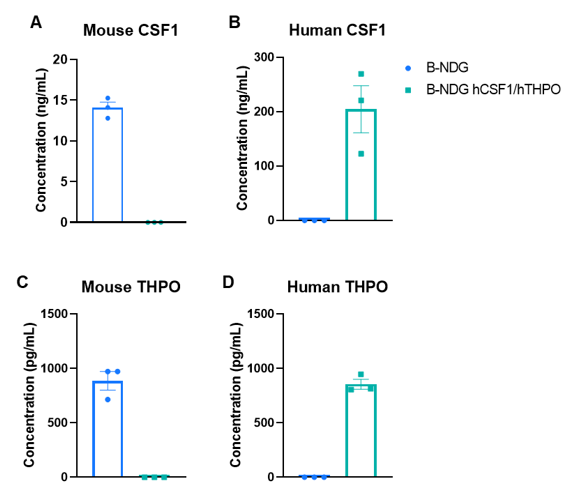
Strain specific CSF1 and THPO expression analysis in B-NDG mice and homozygous B-NDG hCSF1/hTHPO mice by ELISA. Serum were collected from B-NDG mice and homozygous B-NDG hCSF1/hTHPO mice stimulated with LPS in vivo, and analyzed by ELISA with species-specific CSF1 and THPO antibodies. Mouse CSF1 and THPO were only detectable in B-NDG mice (A, C). Human CSF1 and THPO were exclusively detectable in homozygous B-NDG hCSF1/hTHPO mice but not in B-NDG mice (B, D).
Engraftment of human CD34+ HSCs in B-NDG hCSF1/hTHPO mice to reconstitute human immune system (adult mice)
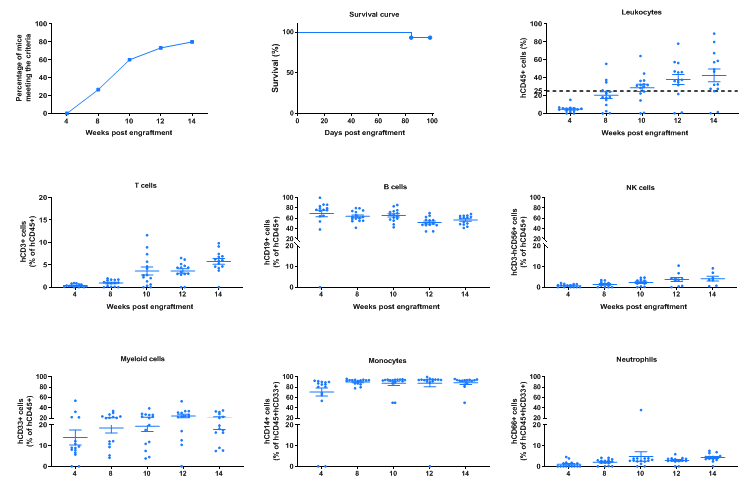
Human CD34+ HSCs (hematopoietic stem cells) (1.5×105) were intravenously injected into homozygote B-NDG hCSF1/hTHPO mice (female, 6 week-old, n=15). Representative flow cytometric analysis of peripheral blood lymphocyte from mice after engraftment with human CD34+ HSCs. Human multi-lineage cells, including T, B, NK, myeloid cells, monocytes and neutrophils were successfully reconstituted. Our results suggest that the human HSCs engrafted humanized mouse model was successfully constructed.
Engraftment of human CD34+ HSCs in B-NDG hCSF1/hTHPO mice to reconstitute human immune system (neonatal mice)
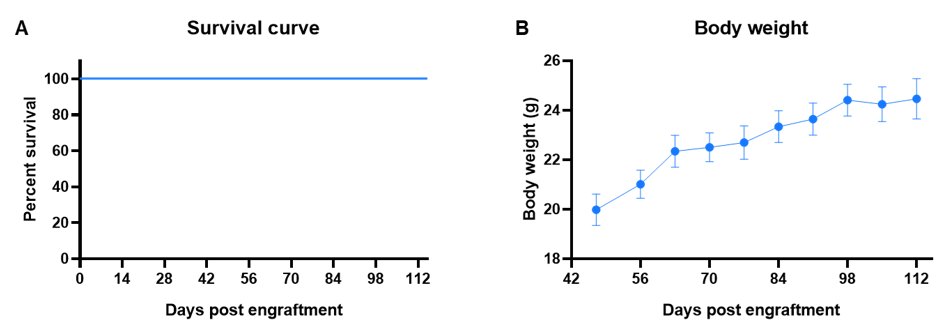
Human CD34+ HSCs (3×104) were intravenous (temporal vein) engrafted into homozygous B-NDG hCSF1/hTHPO mice (female, 24-48 hr after birth, n=11). A. Survival rates of the mice were analyzed with Kaplan Meier survival curves. B. Body weight. Results showed that the survival rate of B-NDG hCSF1/hTHPO mice was 100% after engraftment of human CD34+ HSCs for 16 weeks. The body weight of B-NDG hCSF1/hTHPO mice was increased steadily during the whole reconstitution. Values are expressed as mean ± SEM. HSCs: hematopoietic stem cells.
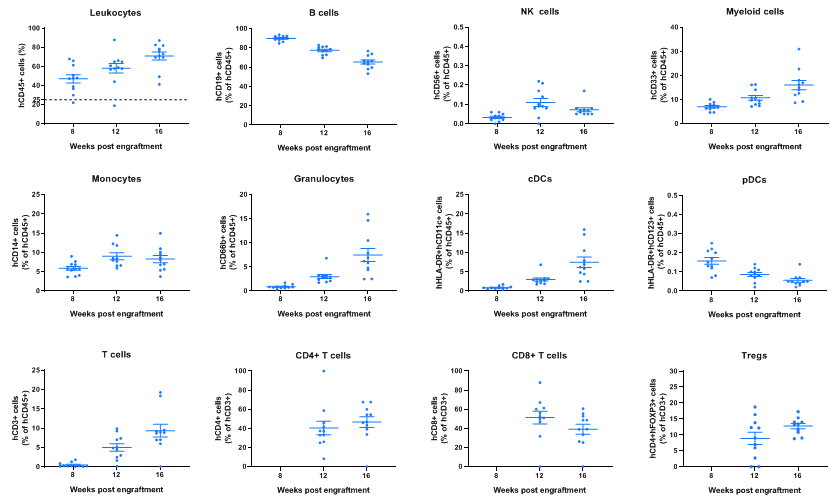
Human CD34+ HSCs (3×104) were intravenous (temporal vein) engrafted into homozygous B-NDG hCSF1/hTHPO mice (female, 24-48 hr after birth, n=11). The frequency of human immune cells in peripheral blood was analyzed by flow cytometry. Results showed that multi-lineage of human cells, including T, B, NK, myeloid cells, monocytes, granulocytes, cDCs, pDCs, Tregs were reconstituted. Values are expressed as mean ± SEM.
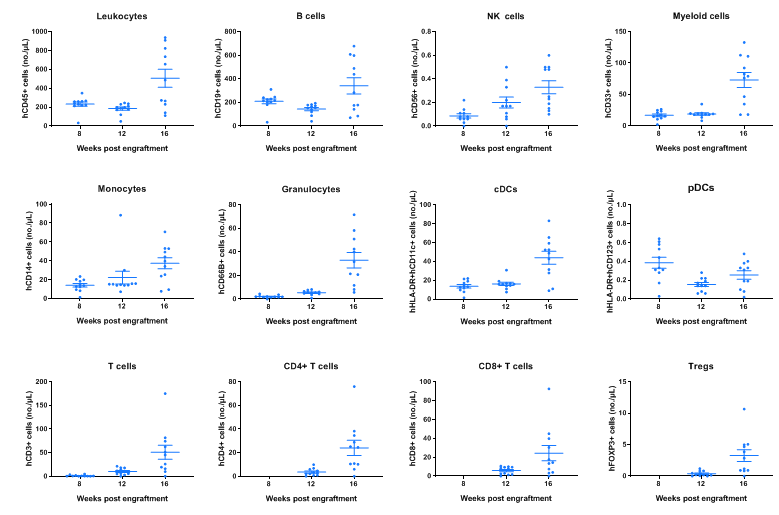
Human CD34+ HSCs (3×104) were intravenous (temporal vein) engrafted into homozygous B-NDG hCSF1/hTHPO mice (female, 24-48 hr after birth, n=11). The absolute number of human immune cells in peripheral blood was analyzed by flow cytometry. Results showed that multi-lineage of human cells, including T, B, NK, myeloid cells, monocytes, granulocytes, cDCs, pDCs, Tregs were reconstituted. Values are expressed as mean ± SEM.












 京公网安备:
京公网安备: